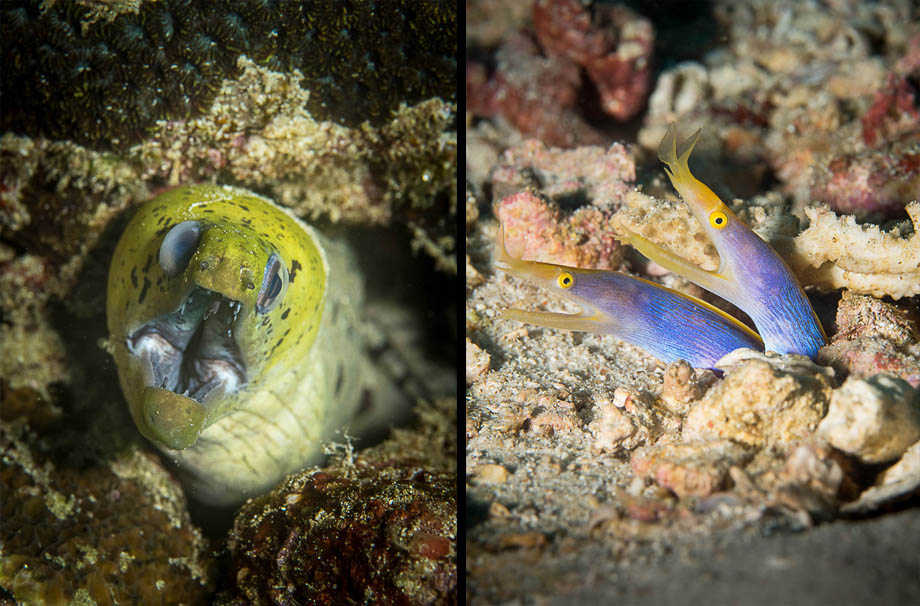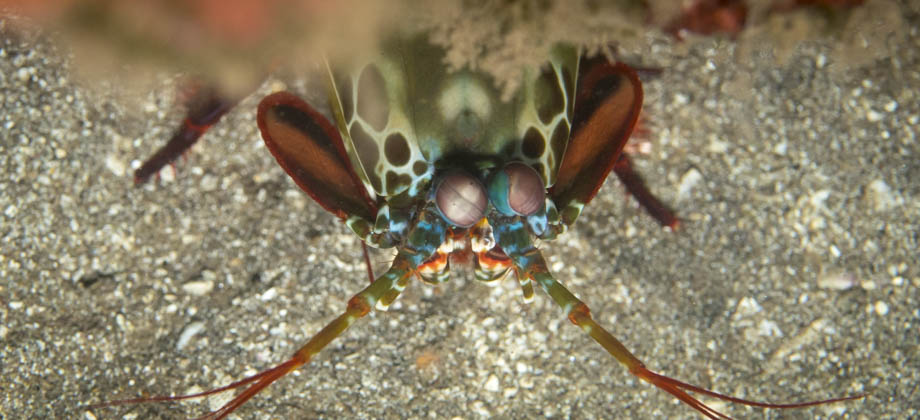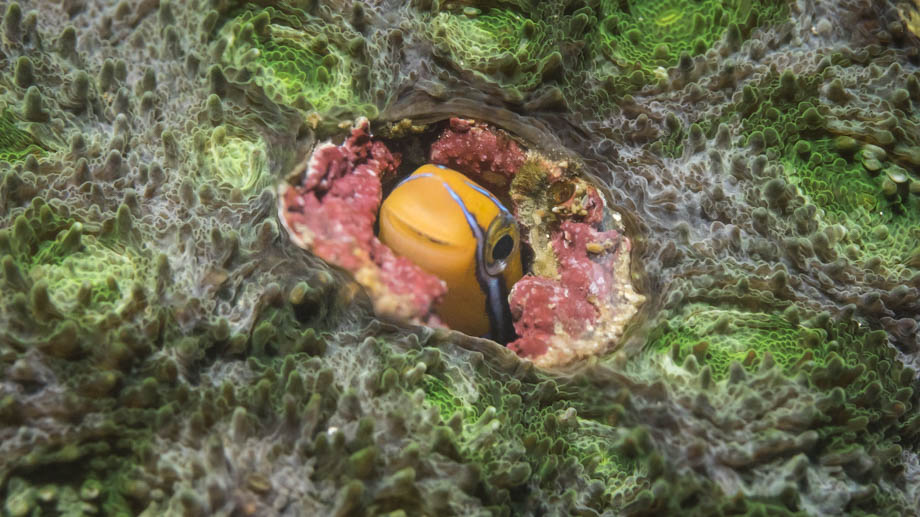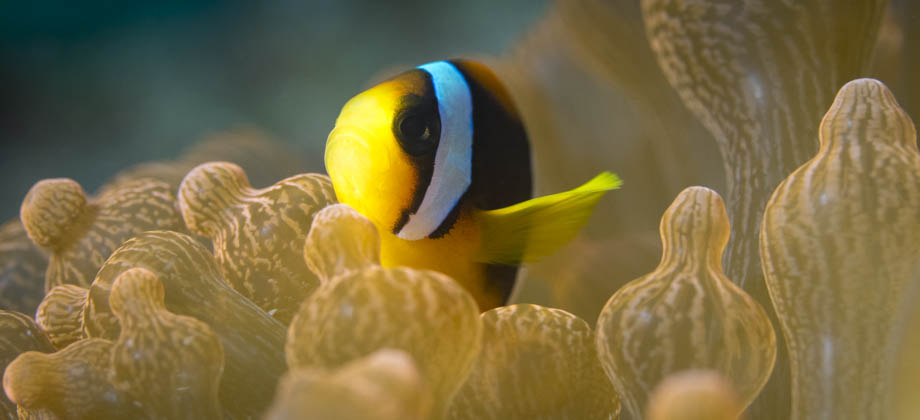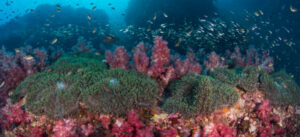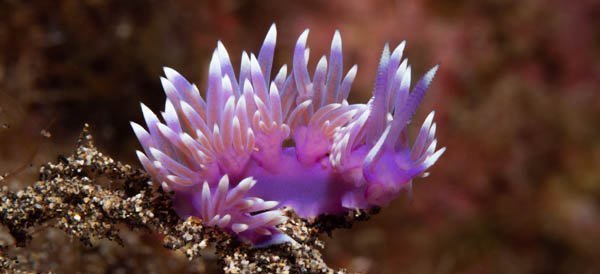Weh Island
Morays
Certain dive sites around Weh island, like Batee Tokong for instance, seem to have copious numbers of moray eels packed into cracks and crevices everywhere. The morays that you will encounter will tend to be either giant morays (Gymnothorax javanicus), fimbriated morays (Gymnothorax fimbriatus), honeycomb morays (Gymnothorax favagineus), or white-eyed morays (Gymnothorax thyrsoideus), although blue ribbon eels (Rhinomuraena quaesita) can also occasionally be seen. You are far more likely to see the blue male variants if you do encounter a ribbon eel though, as ribbon eels are sequential hermaphrodites. All of them are born male and turn into females (turning yellow) towards the end of their life spans (meaning females are far less common). They then mate, lay their eggs, and die within a month or so.
